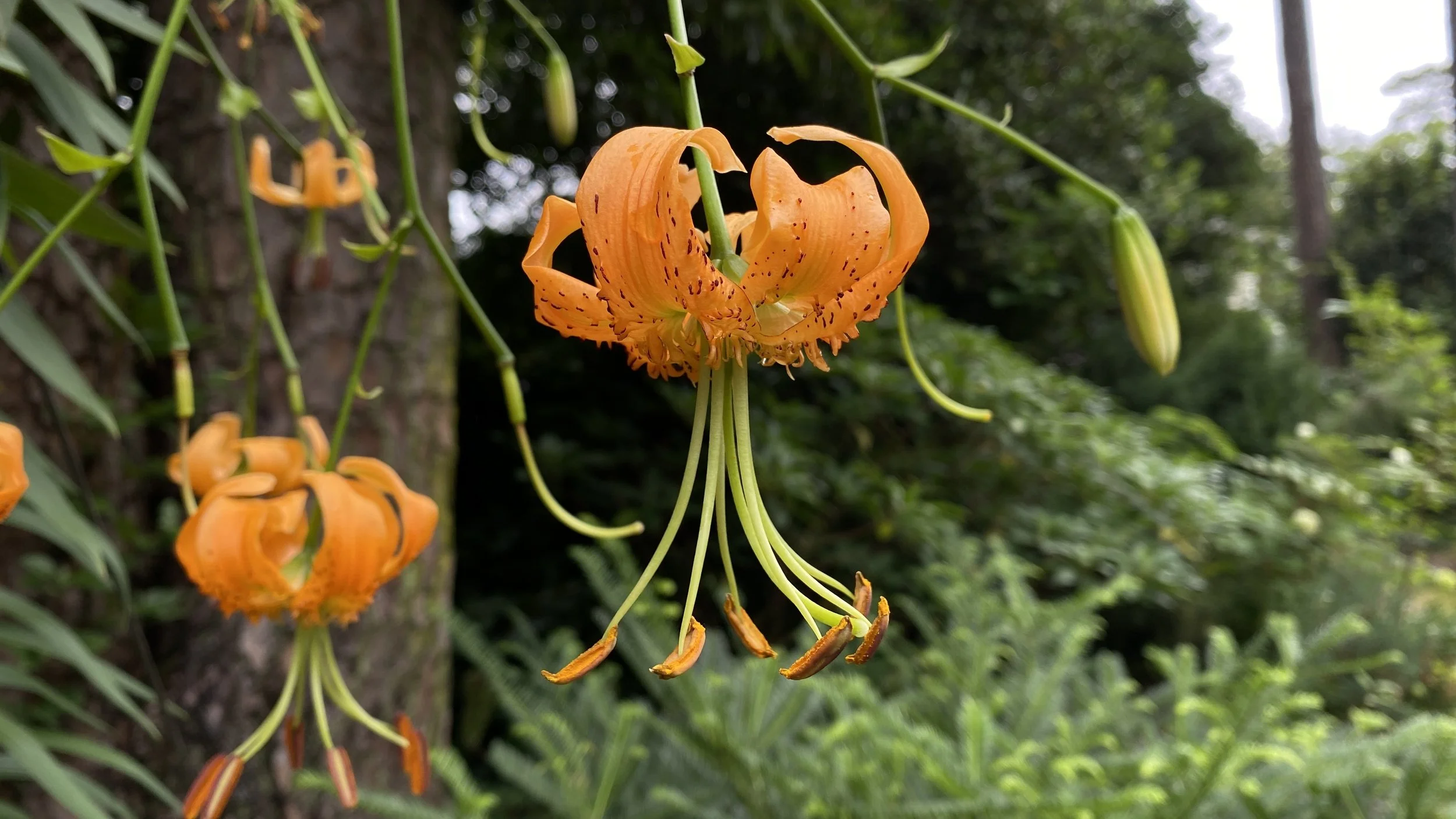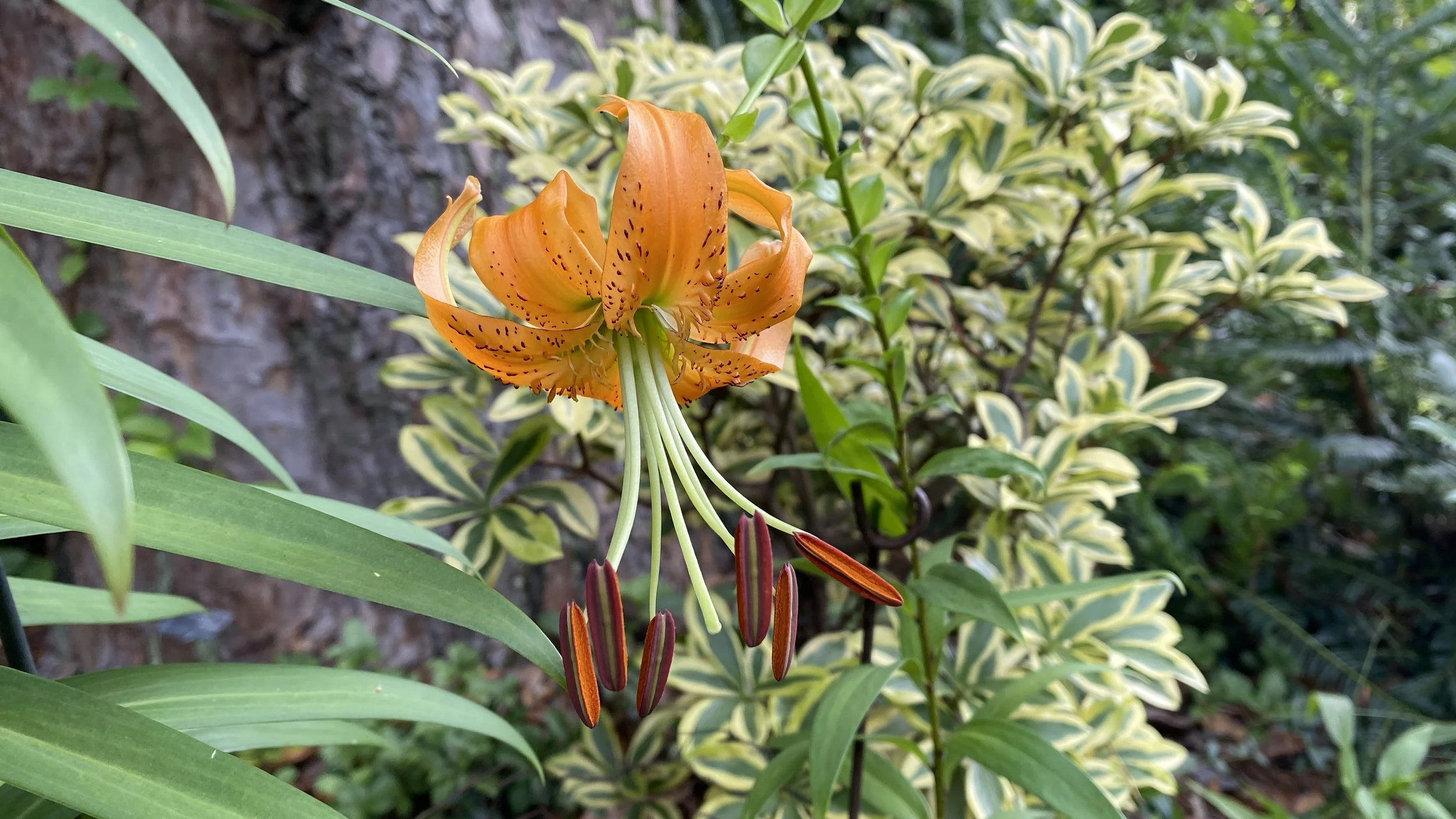Last week, I had an incredible discovery: one of Elizabeth Lawrence’s original plant tags intertwined in the original hog-wire fencing on the west property line. As soon as I saw the tag, just hanging out with its “legs” wrapped around the fencing, my brain went all fizzy and buzzy… all I could think was… MUST… RETRIEVE… NOW!! What I should have done—had my brain not skipped over all rational thought processes and dived straight into frenzy mode—was take a photo of it in situ. Sometimes the curator within takes a backseat to the childlike discoverer. But I digress… let’s get back to the plant tag.
I excitedly disentangled it from the fence and turned it over in my hand. To my amazement, it was completely legible. I nearly fainted with disbelief at what was neatly printed in Elizabeth’s hand: “L. Henryi”. Of all original plant tags to find, this one was … IS … a very special one.
It all began in 1949.
On November 26, 1949, Elizabeth planted one bulb of Henry’s lily, Lilium henryi. In the fall of 1955, she planted four more. One of those plantings is still here. And I don’t mean—oh, that type of lily still grows here—I mean, one of the actual bulbs that Elizabeth planted in 1949—or 1955—is still here.
I can follow the flowering cycles through Elizabeth’s records. The earliest first bloom date she recorded was June 26, the latest, July 20. The date that Henry’s lily opened its first bloom was most often July 7. The bulb lived—and bloomed, although perhaps not every year—through Elizabeth’s 35 years here. During her nearly 23-year tenure as owner of the property, Lindie Wilson saved it from the ravages of rabbits. The chicken wire baffle she made decades ago still guards it from those hungry rodents to this day. For the past ten years, I have vigilantly pruned over-arching canopies of nearby evergreen trees and shrubs solely to increase this bulb’s health and vigor.
The pay-off, years (decades, really) in the making.
When I started working here (November 2010) this bulb produced one single stem each spring. It grew tall, with lustrous dark green leaves whorled from the thick stalk, but it never bloomed. Its location—near the birdbath—was quite shaded at the time. I don’t think it got even a single direct ray of sunlight. Although Henry’s lily prefers a little shade, this poor fella was in a bit of a closet.
So, I began to create a little light for this lone bulb.
I gradually thinned the canopy of the neighboring Camellia japonica ‘White Empress’ and curbed the enthusiasm of the widely spreading Cephalotaxus harringtonia ‘Prostrata’ nearby.
Six years ago, the lone stem emerged as per usual in May. By mid-June, small flower buds began to form at the tip of the five and a half foot tall stem (it wasn’t done growing for another foot or so). And, as if never skipping a beat, the first bloom opened on… wait for it… July 7! This place still has Elizabeth’s magic in its soil.
Four years ago, a second stalk rose from the ground, but still only the one bloomed. The following year there were as many as four stems. Last year I counted five, with two stalks mature enough to bloom.
This year there are seven stems, of which five have buds. Five. Wait, did you hear me there? I said FIVE blooming stems!!
This morning, July 7, as I did my usual first-thing-in-the-morning tour through the garden, I was beyond thrilled to see this:
Are you kidding me?! How awesome is that? Talk about a legacy in bloom!!
Please come see this resilient bulb in person. Barring catastrophe, Elizabeth Lawrence’s Henry’s lily will be flowering for the remainder of the month.
Until next time, Happy gardening!
Yours in History and Dirt,
Andrea



